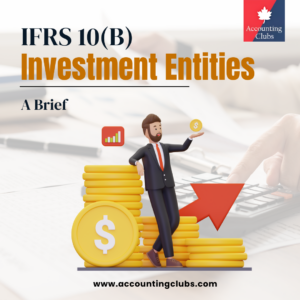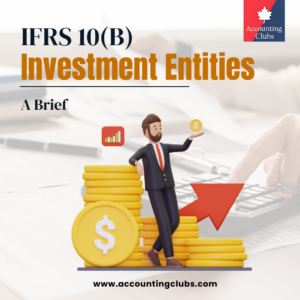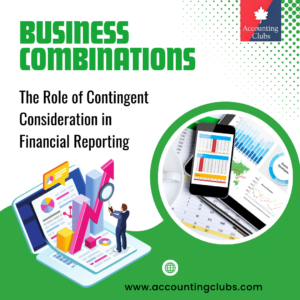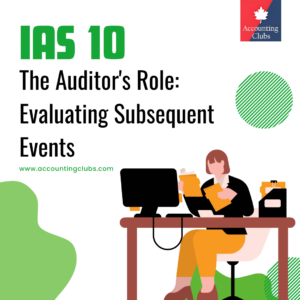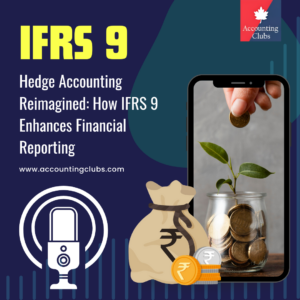Chapter 6: Disclosures
Disclosure requirements
Relationships
Regardless of whether there have been transactions with related parties, an entity is required to disclose:
- the name of its parent and, if different, the ultimate controlling party; and
- if neither the entity’s parent nor the ultimate controlling party produces consolidated financial statements available for public use, the name of the next most senior parent that does so. The next most senior parent is the first parent in the group, above the immediate parent, that produces consolidated financial statements available for public use.
IAS 24 indicates that relationships involving control should be disclosed, even when there have been no transactions between the parties, to enable users of financial statements to form a view about the effects of related party relationships on the entity.
The requirements of IAS 24 are in addition to the disclosure requirements of IAS 27 and IFRS 12.
Disclosure of ultimate controlling party
The ultimate controlling party may or may not be a corporate entity. The requirement to disclose the entity’s ultimate controlling party means that, if such control is exercised by an individual, or by a group of individuals acting in concert, their identity must be disclosed.
Disclosures required regarding compensation of key management personnel
The total compensation of key management personnel is required to be disclosed, and analysed between:
- short-term employee benefits;
- post-employment benefits;
- other long-term benefits;
- termination benefits; and
- share-based payment.
Compensation – definition
Compensation includes all employee benefits, as defined in IAS 19. It includes those benefits to which IFRS 2 applies. Compensation includes:
- short-term employee benefits, such as wages, salaries, and social security contributions, paid annual leave and paid sick leave, profit-sharing and bonuses (if payable within 12 months of the end of the period) and non-monetary benefits (such as medical care, housing, cars, and free or subsidised goods or services) for current employees;
- post-employment benefits such as pensions, other retirement benefits, post-employment life insurance and post-employment medical care;
- other long-term employee benefits, including long-service leave or sabbatical leave, jubilee or other long-service benefits, long-term disability benefits and, if they are not payable wholly within 12 months after the end of the period, profit-sharing, bonuses and deferred compensation;
- termination benefits; and
- share-based payment.
Employee benefits are all forms of consideration paid, payable or provided by the entity, or on behalf of the entity, in exchange for services rendered to the entity. They also include such consideration paid on behalf of a parent of the entity in respect of the entity.
Payments for services to more than one entity
The disclosure required is in respect of services provided to the entity, irrespective of how payment is made. Therefore, when key management personnel are paid a single salary in respect of services to more than one entity within the group, the amounts paid should be allocated between the services provided to the different group entities for the purposes of the separate or individual financial statements of each group entity.
Negative compensation amount for key management personnel – example
Members of key management personnel have been granted options under an entity’s executive share option plan. The options vest over a three-year period and include a non-market vesting condition. In 20X1 and 20X2, it is estimated that the non-market vesting condition will be satisfied and, accordingly, under IFRS 2, the entity recognises an expense for these options on this basis. In 20X3 (the current reporting period), the non-market vesting condition is not satisfied and, therefore, the entity reverses the cumulative expense recognised in 20X1 and 20X2 in accordance with the requirements of IFRS 2.
This ‘negative expense’ should be included in the amounts disclosed for the compensation of key management personnel when the non-market vesting condition is not satisfied and the entity ‘trues up’ its recognised IFRS 2 expense in 20X3.
IAS 24 requires disclosure of key management personnel compensation, which is defined to include all employee benefits (as defined in IAS 19 and including those employee benefits to which IFRS 2 applies).
IAS 24 does not provide guidance on the measurement of the amounts to be disclosed for such compensation. Reference should therefore be made to the measurement guidance contained in other Standards (such as IAS 19 and IFRS 2) to determine amounts to be disclosed.
Accordingly, it is appropriate to ‘true up’ the amount disclosed as share-based payment compensation when options do not vest because of non-market vesting conditions not being satisfied in a manner that is consistent with the treatment adopted in the measurement of the expense recognised under IFRS 2.
In such circumstances, entities should consider whether they ought to provide additional disclosure to explain this negative amount included in the measurement of the amounts disclosed for the compensation of key management personnel, particularly in the light of any comparative amount provided.
Compensation of key management personnel who are members of an entity’s defined benefit retirement benefit plan
IAS 24 does not provide guidance as to the measurement of amounts to be disclosed with respect to members of key management personnel who are also members of an entity’s defined benefit retirement benefit plan.
Reference should therefore be made to the measurement guidance contained in other Standards, such as IAS 19, to determine the measurement of the compensation to be disclosed.
The entity should include in the amounts disclosed the cost of an employee benefit, attributable to the services rendered by the employee to the entity, with respect to the employee’s participation in the defined benefit plan.
The entity should establish its own accounting policy regarding how the amount is determined. The entity should disclose the method adopted and as much information as possible given the information available. The policy adopted should be applied on a consistent basis.
IAS 19 does not prescribe whether an entity should present service cost and net interest on the net defined benefit liability (asset) as components of a single item of income or expense in profit or loss. The following accounting policies might be considered acceptable, depending on an entity’s circumstances:
- disclosure of the amount of the total IAS 19 expense recognised in profit or loss that is attributable to the key management personnel; or
- disclosure of the amount of the IAS 19 service cost that is attributable to the key management personnel.
The following accounting policies would be considered unacceptable:
- no disclosure of key management personnel employee benefits because of the complexity of calculation;
- disclosure of the IAS 19 service cost as reduced by interest income on plan assets but without including interest cost on the defined benefit obligation that is attributable to the key management personnel; or
- disclosure of the contribution by the entity to the employee defined benefit plan with respect to the key management personnel only.
In determining the amount to be disclosed as compensation, entities should consider all of the relevant facts, circumstances and complexities associated with IAS 19 including, among others, whether the employee defined benefit plan is for key management personnel only, or whether it also includes other employees.
Non-monetary benefits to key management – example
A member of key management personnel is given, as part of his employment package, the benefit of staying in a residential property owned by the entity. The property was bought by the entity 50 years ago. The value of the property has increased significantly compared to its cost. The market rental of a similar property is CU100,000 per annum. The depreciation recognised on the property is CU5,000 per annum.
IAS 24 states that if an entity has had related party transactions during the periods covered by the financial statements, it should disclose the nature of the related party relationship as well as information about those transactions and outstanding balances, including commitments, necessary for users to understand the potential effect of the relationship on the financial statements. These disclosure requirements are in addition to the requirements in IAS 24.
For the purposes of IAS 24, it would be appropriate to disclose the depreciation recognised in the period, because that is the amount the entity has recognised in profit or loss in respect of the benefits.
IAS 24 does not require disclosure of the fair value of the benefit provided. The entity should consider whether the amount recognised reflects the nature of the benefit provided. If the fair value of the benefit can be measured reliably, disclosure of additional information that is relevant to users, including a description of the terms and conditions of the compensation, is to be encouraged.
Payments to trusts controlled by key management personnel – example
Mr. X, who is a member of the key management personnel of Entity A, has set up a trust to receive a proportion of his remuneration from Entity A; his close family members are the sole beneficiaries of the trust.
The amounts paid to the trust should be disclosed under IAS 24.
IAS 24 requires the disclosure of key management personnel compensation in total and for specified categories. IAS 24 defines compensation to include “all forms of consideration paid, payable or provided by the entity … in exchange for services rendered to the entity”. Therefore, any amounts paid by the entity in respect of the services of Mr. X are disclosable, irrespective of the payee.
It is also very likely that the trust will be a related party of Entity A in its own right in accordance with IAS 24.
Compensation to key management personnel paid through a management entity
If the reporting entity obtains key management personnel services from another entity (the management entity), the reporting entity is not required to apply the requirements of IAS 24 to the compensation paid or payable by the management entity to the management entity’s employees or directors.
However, separate disclosure is required of amounts incurred for the provision of key management personnel services that are provided by a separate management entity in accordance with IAS 24.
It is often impracticable for a reporting entity to access the detailed information that is required by IAS 24 when compensation is paid to a separate entity as fees.
Consequently, IAS 24 provides relief so that the reporting entity is not required to disclose components of compensation to key management personnel that is paid through another entity. However, the reporting entity is required to disclose other related party transactions with the management entity (e.g., loans) under the general requirements of IAS 24 and, specifically, the service fee paid or payable to the management entity.
Other related party transactions
Requirement to disclose details of other transactions with related parties – general
In addition to the compensation of key management personnel, an entity is required to disclose details of any other transactions with its related parties during the periods covered by the financial statements. If such transactions have occurred, IAS 24 requires disclosure of:
- the nature of the related party relationship; and
- information about the transactions and outstanding balances, including commitments, necessary for an understanding of the potential effect of the relationship on the financial statements.
The following examples are cited in the Standard of related party transactions that require disclosure:
- purchases or sales of goods (finished or unfinished);
- purchases or sales of properties or other assets;
- rendering or receiving of services;
- leases;
- transfers of research and development;
- transfers under licence agreements;
- transfers under finance arrangements (including loans and equity contributions in cash or in kind);
- provision of guarantees or collateral;
- settlement of liabilities on behalf of the entity or by the entity on behalf of that related party; and
- commitments to do something if a particular event occurs or does not occur in the future, including executory contracts (recognised and unrecognised).
Participation by a parent or subsidiary in a defined benefit plan that shares risks between group entities is a transaction between related parties.
The list of examples in IAS 24 is not intended to be exhaustive, and any event meeting the definition of a related party transaction should be disclosed if it is material.
In September 2017, the Board issued a non-mandatory Practice Statement Making Materiality Judgements to provide guidance on how to make materiality judgements when entities prepare financial statements. The Practice Statement contains specific examples of assessment of whether related party transactions are material.
Disclosures regarding dividends paid to related parties
The payment of dividends to a related party constitutes a related party transaction. However, in some cases, the information may already be disclosed, and it may not be necessary to provide additional disclosures to meet the requirements of IAS 24. For example, if disclosure is made of (1) the fact that the reporting entity is wholly owned, (2) the fact that the ownership has not changed in the reporting period, and (3) details of dividends paid and proposed, it is not necessary to state explicitly that the dividend has been paid to the owner.
Details to be disclosed
The following minimum disclosures are required:
- the amount of the transactions;
- the amount of outstanding balances, including commitments, and:
- their terms and conditions, including whether they are secured, and the nature of the consideration to be provided in settlement; and
- details of any guarantees given or received;
- provisions for doubtful debts related to the amount of the outstanding balances; and
- the expense recognised during the period in respect of bad or doubtful debts due from related parties.
The details listed in IAS 24 are not exhaustive, and other significant aspects of the transactions will be required to be disclosed, if such disclosure is necessary for an understanding of the financial statements.
An entity cannot avoid disclosure simply because the transaction is on normal market terms.
Amounts incurred for the provision of key management personnel services by a separate management entity
An entity is required to disclose amounts incurred for the provision of key management personnel services that are provided by a separate management entity.
Aggregation of related party transactions
IAS 24 states that items of a similar nature may be disclosed in aggregate, except when separate disclosure is necessary for an understanding of the effects of related party transactions on the financial statements.
Aggregation of related party transactions
Related parties may include a number of parties who have the same or similar relationships with the entity, such as a group of owners, members of key management personnel etc. IAS 24 is not specific as to whether transactions with such related parties with similar relationships to the entity can be disclosed in aggregate, nor as to the circumstances that might lead to separate disclosure of items of a similar nature.
The principal objective of IAS 24 is to provide useful information to the users of financial statements while avoiding excessive disclosure when the related party transactions comprise many items of a routine nature, such as in a normal trading relationship between group entities. Therefore, transactions with related parties with similar relationships may be disclosed in aggregate unless a transaction is individually significant. A significant transaction with a specific related party should not be concealed within an aggregated disclosure.
Analysis of transactions and balances
The disclosures set out in IAS 24 are required to be made separately for each of the following categories:
- the parent;
- entities with joint control of or significant influence over the entity;
- subsidiaries;
- associates;
- joint ventures in which the entity is a joint ventures;
- key management personnel of the entity or its parent; and
- other related parties.
The classification of amounts payable to, and receivable from, related parties in the different categories set out above is an extension of the disclosure requirements in IAS 1 for information to be presented either in the statement of financial position or in the notes. The categories are intended to provide a more comprehensive analysis of related party balances and apply to related party transactions.
Reference to transactions carried out at arm’s length
IAS 24 specifically states that it is inappropriate to indicate that transactions were carried out at arm’s length unless such an assertion can be substantiated.
f no price is charged for a transaction that would have given rise to a cost if the transaction had been entered into with an unrelated party, then this fact should be disclosed. In a group context, it is particularly important to consider services that are provided by the parent free of charge. For example, administrative services provided free of charge or group banking arrangements that result in lower finance costs may be disclosable if their effect is material (i.e., if the financial effect of such arrangements has a material impact on the results disclosed in the financial statements).
In addition to the related party disclosures required under IAS 24, when goods and services are provided by a parent or owner to its subsidiary free of charge, it will be appropriate to consider whether a capital contribution should be recognised. Similarly, when goods and services are provided by a subsidiary to a parent free of charge, it will be appropriate to consider whether a distribution should be recognised.
Comparative information for related party disclosures
The general requirement to present comparative information under IAS 1 means it is necessary to present comparative information for related party transactions. There are various areas of uncertainty, however, as to which amounts are appropriately disclosed as comparative information for related party disclosures. For example:
- a party is a related party in the current year but was not in the prior year. Should transactions with that party in the prior year be disclosed as comparative information, even though it was not a related party in that prior year?
- a party was a related party in the prior year but is not in the current year. Should transactions with that party in the prior year (which were disclosed in that year’s financial statements) be disclosed again?
IAS 24 does not address these issues specifically. It is necessary to look at the underlying objective of the Standard. The purpose of the disclosures required by IAS 24 is to draw attention to the possibility that the financial statements have been affected by related party transactions. The transactions that may have affected the current period’s results are those with parties that were related in the current period. The appropriate comparative information (i.e., transactions that may have affected the comparative period’s results), would therefore be transactions with parties that were related in the comparative period. Under this approach, the financial statements should disclose:
- the impact on amounts reported in the current year of transactions with parties who are related during the current year; and
- as comparative information, the impact on amounts reported in the prior year of transactions with parties who were related during the prior year.
When this is deemed to give insufficient explanation, additional disclosures may be provided.
Transactions with party related in the prior period but not in the current period – example
A Limited is a related party of the reporting entity in the current period but was not a related party in the prior period. Sales were made by the reporting entity to A Limited in both the current and prior periods.
Comparative amounts should not be disclosed for sales made to A Limited, because there was no related party relationship that may have affected the comparative period’s results. If the absence of comparative information may lead to confusion, an additional explanation might be provided, stating that, while similar transactions were entered into in the prior period, they were not related party transactions because the related party relationship did not exist in that period.
Transactions with party related in the prior period but not in the current period – example
B Limited was a related party of the reporting entity in the prior period but is not a related party in the current period. Sales were made by the reporting entity to B Limited in both the current and prior periods.
The prior period’s sales should be disclosed as related party transactions again in the current year because they may have had an impact on the comparative figures in the financial statements. The current period’s sales to B Limited should not be disclosed, because B Limited is no longer a related party. When the inclusion of comparative amounts but no current period figures may lead to confusion, an additional explanation might be provided, stating that, while similar transactions occurred in the current period, they are not related party transactions because the related party relationship did not exist in that period.
Government-related entities
When the exemption for government-related entities is applied, IAS 24 requires the reporting entity to disclose certain information in the spirit of the objective of IAS 24 to provide “disclosures necessary to draw attention to the possibility that its financial position and profit or loss may have been affected by the existence of related parties and by transactions and outstanding balances, including commitments, with such parties”.
The requirements of IAS 24 aim to meet this objective. An entity applying the exemption is required to disclose:
- the name of the government and the nature of its relationship with the reporting entity (i.e., control, joint control or significant influence);
- (b) the following information in sufficient detail to enable users of the entity’s financial statements to understand the effect of the related party transactions on its financial statements:
- the nature and amount of each individually significant transaction; and
- for other transactions that are collectively, but not individually, significant, a qualitative or quantitative indication of their extent. Types of transactions include those listed in IAS 24.
IAS 24 requires judgement to be used in determining the level of detail to be disclosed in accordance with the requirement of IAS 24. It states that the closeness of the related party relationship and other factors relevant in establishing the level of significance of the transaction should be considered such as whether the transaction is:
- significant in terms of size;
- carried out on non-market terms;
- outside normal day-to-day business operations, such as the purchase and sale of businesses;
- disclosed to regulatory or supervisory authorities;
- reported to senior management; or
- subject to shareholder approval.
The Standard includes illustrative disclosure requirements that could be made when a reporting entity takes advantage of the partial exemption provided in the Standard. These are reproduced below.
Example
Example of disclosure for individually significant transaction carried out on non-market terms
On 15 January 20X1 Entity A, a utility company in which Government G indirectly owns 75 per cent of outstanding shares, sold a 10-hectare piece of land to another government-related utility company for CU5 million. On 31 December 20X0 a plot of land in a similar location, of a similar size and with similar characteristics, was sold for CU3 million. There had not been any appreciation or depreciation of the land in the intervening period.
Example of disclosure for individually significant transaction because of size of transaction
In the year ended December 20X1 Government G provided Entity A, a utility company in which Government G indirectly owns 75 per cent of outstanding shares, with a loan equivalent to 50 per cent of its funding requirement, repayable in quarterly instalments over the next five years. Interest is charged on the loan at a rate of 3 per cent, which is comparable to that charged on Entity A’s bank loans. *
*
If the reporting entity had concluded that this transaction constituted government assistance it would have needed to consider the disclosure requirements in IAS 20.
Example of disclosure of collectively significant transactions
Government G, indirectly, owns 75 per cent of Entity A’s outstanding shares. Entity A’s significant transactions with Government G and other entities controlled, jointly controlled or significantly influenced by Government G are [a large portion of its sales of goods and purchases of raw materials] or [about 50 per cent of its sales of goods and about 35 per cent of its purchases of raw materials].
The company also benefits from guarantees by Government G of the company’s bank borrowing.
All entities
Relationships between a parent and its subsidiaries shall be disclosed irrespective of whether there have been transactions between them. An entity shall disclose the name of its parent and, if different, the ultimate controlling party. If neither the entity’s parent nor the ultimate controlling party produces consolidated financial statements available for public use, the name of the next most senior parent that does so shall also be disclosed.
To enable users of financial statements to form a view about the effects of related party relationships on an entity, it is appropriate to disclose the related party relationship when control exists, irrespective of whether there have been transactions between the related parties.
The requirement to disclose related party relationships between a parent and its subsidiaries is in addition to the disclosure requirements in IAS 27 and IFRS 12 Disclosure of Interests in Other Entities.
An entity shall disclose key management personnel compensation in total and for each of the following categories:
(a) short-term employee benefits;
(b) post-employment benefits;
(c) other long-term benefits;
(d) termination benefits; and
(e) share-based payment.
If an entity obtains key management personnel services from another entity (the ‘management entity’), the entity is not required to apply the requirements to the compensation paid or payable by the management entity to the management entity’s employees or directors.
If an entity has had related party transactions during the periods covered by the financial statements, it shall disclose the nature of the related party relationship as well as information about those transactions and outstanding balances, including commitments, necessary for users to understand the potential effect of the relationship on the financial statements. At a minimum, disclosures shall include:
- (a) the amount of the transactions;
- (b) the amount of outstanding balances, including commitments, and:
(i) their terms and conditions, including whether they are secured, and the nature of the consideration to be provided in settlement; and
(ii) details of any guarantees given or received;
(c) provisions for doubtful debts related to the number of outstanding balances; and
(d) the expense recognised during the period in respect of bad or doubtful debts due from related parties.
Amounts incurred by the entity for the provision of key management personnel services that are provided by a separate management entity shall be disclosed.
The disclosures required shall be made separately for each of the following categories:
(a) the parent;
(b) entities with joint control of, or significant influence over, the entity;
(c) subsidiaries;
(d) associates;
(e) joint ventures in which the entity is a joint ventures;
(f) key management personnel of the entity or its parent; and
(g) other related parties.
The classification of amounts payable to, and receivable from, related parties in the different categories is an extension of the disclosure requirement in IAS 1 Presentation of Financial Statements for information to be presented either in the statement of financial position or in the notes. The categories are extended to provide a more comprehensive analysis of related party balances and apply to related party transactions.
The following are examples of transactions that are disclosed if they are with a related party:
(a) purchases or sales of goods (finished or unfinished);
(b) purchases or sales of property and other assets;
(c) rendering or receiving of services;
(d) leases;
(e) transfers of research and development;
(f) transfers under licence agreements;
(g) transfers under finance arrangements (including loans and equity contributions in cash or in kind);
(h) provision of guarantees or collateral;
(i) commitments to do something if a particular event occurs or does not occur in the future, including executory contracts7 (recognised and unrecognised); and
(j) settlement of liabilities on behalf of the entity or by the entity on behalf of that related party.
Participation by a parent or subsidiary in a defined benefit plan that shares risks between group entities is a transaction between related parties.
Disclosures that related party transactions were made on terms equivalent to those that prevail in arm’s length transactions are made only if such terms can be substantiated.
Items of a similar nature may be disclosed in aggregate except when separate disclosure is necessary for an understanding of the effects of related party transactions on the financial statements of the entity.
Disclosure by bank of transactions with related parties
All entities
Relationships between a parent and its subsidiaries shall be disclosed irrespective of whether there have been transactions between them. An entity shall disclose the name of its parent and, if different, the ultimate controlling party. If neither the entity’s parent nor the ultimate controlling party produces consolidated financial statements available for public use, the name of the next most senior parent that does so shall also be disclosed.
To enable users of financial statements to form a view about the effects of related party relationships on an entity, it is appropriate to disclose the related party relationship when control exists, irrespective of whether there have been transactions between the related parties.
The requirement to disclose related party relationships between a parent and its subsidiaries is in addition to the disclosure requirements in IAS 27 and IFRS 12 Disclosure of Interests in Other Entities.
This is the first parent in the group above the immediate parent that produces consolidated financial statements available for public use.
An entity shall disclose key management personnel compensation in total and for each of the following categories:
(a) short-term employee benefits;
(b) post-employment benefits;
(c) other long-term benefits;
(d) termination benefits; and
(e) share-based payment.
If an entity obtains key management personnel services from another entity (the ‘management entity’), the entity is not required to apply the requirements to the compensation paid or payable by the management entity to the management entity’s employees or directors.
If an entity has had related party transactions during the periods covered by the financial statements, it shall disclose the nature of the related party relationship as well as information about those transactions and outstanding balances, including commitments, necessary for users to understand the potential effect of the relationship on the financial statements. At a minimum, disclosures shall include:
(a) the amount of the transactions;
(b) the amount of outstanding balances, including commitments, and:
(i) their terms and conditions, including whether they are secured, and the nature of the consideration to be provided in settlement; and
(ii) details of any guarantees given or received;
(c) provisions for doubtful debts related to the number of outstanding balances; and
(d) the expense recognized during the period in respect of bad or doubtful debts due from related parties.
Amounts incurred by the entity for the provision of key management personnel services that are provided by a separate management entity shall be disclosed.
The disclosures required be made separately for each of the following categories:
(a) the parent;
(b) entities with joint control of, or significant influence over, the entity;
(c) subsidiaries;
(d) associates;
(e) joint ventures in which the entity is a joint ventures;
(f) key management personnel of the entity or its parent; and
(g) other related parties.
The classification of amounts payable to, and receivable from, related parties in the different categories as required is an extension of the disclosure requirement in IAS 1 Presentation of Financial Statements for information to be presented either in the statement of financial position or in the notes. The categories are extended to provide a more comprehensive analysis of related party balances and apply to related party transactions.
The following are examples of transactions that are disclosed if they are with a related party:
(a) purchases or sales of goods (finished or unfinished);
(b) purchases or sales of property and other assets;
(c) rendering or receiving of services;
(d) leases;
(e) transfers of research and development;
(f) transfers under licence agreements;
(g) transfers under finance arrangements (including loans and equity contributions in cash or in kind);
(h) provision of guarantees or collateral;
(i) commitments to do something if a particular event occurs or does not occur in the future, including executory contracts7 (recognized and unrecognized); and
(j) settlement of liabilities on behalf of the entity or by the entity on behalf of that related party.
Participation by a parent or subsidiary in a defined benefit plan that shares risks between group entities is a transaction between related parties.
Disclosures that related party transactions were made on terms equivalent to those that prevail in arm’s length transactions are made only if such terms can be substantiated.
Items of a similar nature may be disclosed in aggregate except when separate disclosure is necessary for an understanding of the effects of related party transactions on the financial statements of the entity.
24 Related Party Disclosures (as revised in 2003).
Relationships that change during the period
A related party relationship might have commenced or ceased during the reporting period. The question arises as to what impact this has on the related party disclosures required under IAS 24 disclosure of related party relationships when control exists and identification of the parent and ultimate controlling party) and IAS 24 (disclosure of transactions between related parties).
The disclosure requirements of IAS 24 do not specify whether the related party relationship should exist at the reporting date in order for the two parties to be considered related. Consequently, it is unclear whether related party relationships or transactions between parties should be disclosed if the parties were related during the reporting period but have ceased to be related at the end of the reporting period.
Conclusion: The Board amended IAS 24 to confirm that only related party transactions during the periods covered by the financial statements should be disclosed but the amendments did not address the above issues.
Equally, the Standard is unclear regarding the appropriate disclosures when a transaction between parties occurred during the period at a time when they were not related but they have become related parties before the end of the reporting period.
In respect of related party relationships when control exists and the identification of the parent and ultimate controlling party, the disclosures should include all entities that were the parent or ultimate controlling party of the reporting entity for any part of the reporting period or at the time of issue of the financial statements.
When there has been a change in the parent or ultimate controlling party during the reporting period, disclosure of the identity of both enables external users to access relevant publicly available information for both (e.g., consolidated financial statements for each parent/ultimate controlling party in which the reporting entity has been consolidated for part of the reporting period).
In respect of the disclosures regarding transactions between related parties under IAS 24, the amounts of such transactions and details regarding terms and conditions etc. should be disclosed for those transactions if the parties were related at the time of the transaction.
Outstanding balances, including related allowances for doubtful debts, should be disclosed in respect of parties that were related parties either at the end of the reporting period or at the time of the transaction that gave rise to the outstanding balance.
If the parties were related at the time of a transaction, disclosure of any outstanding balances provides useful information to external users regarding the settlement of related party transactions, even if the parties are no longer related at the end of the reporting period.
Similarly, the disclosure of outstanding balances with parties that are related at the end of the reporting period but were not related at the time of the transaction, enables users of the financial statements to assess the potential impact of the related party relationship on the future financial position and performance of the reporting entity.
If parties become related after the reporting date, but before the financial statements are authorised for issue, disclosures regarding the new related party may be required in accordance with IAS 10.
If the new related party relationship is a material non-adjusting event after the reporting period, IAS 10 requires disclosure of the nature of the event and an estimate of its financial effect (or a statement that such an estimate cannot be made). In disclosing the estimate of the financial effect of a material new related party relationship, the disclosures required by IAS 24 may be relevant.
Parties related to a group
IAS 24 does not specifically address the use of the term ‘related party’ in the context of consolidated financial statements. The most appropriate approach, however, appears to be to disclose only those transactions with parties who are related parties of the group as a whole. This approach, by implication, means considering the group in its role as reporting entity and considering which parties are related to it under IAS 24.
Thus, for example, the Chief Financial Officer of a subsidiary may be a member of the key management personnel of the subsidiary but may not be viewed as a member of the key management personnel for the group unless he or she has authority and responsibility for planning, directing, and controlling activities at a group level. This degree of influence at a group level may arise because of the individual having a management role at the parent entity level or, if the subsidiary is significant, directly because of his or her authority over and responsibility for a significant component of the group.
Close members of the family of a person
Close members of the family of a person are those family members who may be expected to influence, or be influenced by, that person in their dealings with the entity and include:
- that person’s children and spouse or domestic partner;
- children of that person’s spouse or domestic partner; and
- dependants of that person or that person’s spouse or domestic partner.
List of close family members in IAS 24 is not exhaustive
The list of examples of close family members in IAS 24 is not intended to be exhaustive, and it is necessary to examine a much wider range of relationships under IAS 24. Depending on the assessment of specific facts and circumstances, other family members (e.g., brothers, sisters, parents or grandparents) could qualify as close family members.
The Standard refers to those family members who may be expected to influence, or be influenced by, the person. The test is not, therefore, one of whether influence exists in practice, but whether users of the financial statements would expect such influence to exist.
Related party transactions
A related party transaction is defined as a transfer of resources, services or obligations between a reporting entity and a related party, regardless of whether a price is charged.
The last phrase in this definition (“regardless of whether a price is charged”) means that it is not possible to rely only on an entity’s normal accounting records (general ledger, cash book, sales ledger etc.) to identify related party transactions. In addition, there will need to be a process for tracking any goods or services received or provided free of charge. It is not uncommon for directors to give guarantees in respect of the borrowings of an entity, often without making a charge to the entity. The provision of such a guarantee will be a related party transaction.
Partial exemption for government-related entities
Example 1 – Exemption from disclosure
Government G directly or indirectly controls Entities 1 and 2 and Entities A, B, C and D. Person X is a member of the key management personnel of Entity 1.
For Entity A’s financial statements, the exemption applies to:
- transactions with Government G; and
- transactions with Entities 1 and 2 and Entities B, C and D.
However, that exemption does not apply to transactions with Person X.
Disclosure requirements when exemption applies
In Entity A’s financial statements, an example of disclosure to comply for individually significant transactions could be:
Example of disclosure for individually significant transaction carried out on non-market terms
On 15 January 20X1 Entity A, a utility company in which Government G indirectly owns 75 per cent of outstanding shares, sold a 10-hectare piece of land to another government-related utility company for CU5 million.1 On 31 December 20X0 a plot of land in a similar location, of a similar size and with similar characteristics, was sold for CU3 million. There had not been any appreciation or depreciation of the land in the intervening period.
Example of disclosure for individually significant transaction because of size of transaction
In the year ended December 20X1 Government G provided Entity A, a utility company in which Government G indirectly owns 75 per cent of outstanding shares, with a loan equivalent to 50 per cent of its funding requirement, repayable in quarterly instalments over the next five years. Interest is charged on the loan at a rate of 3 per cent, which is comparable to that charged on Entity A’s bank loans.
Example of disclosure of collectively significant transactions
In Entity A’s financial statements, an example of disclosure to comply for collectively significant transactions could be:
Government G, indirectly, owns 75 per cent of Entity A’s outstanding shares. Entity A’s significant transactions with Government G and other entities controlled, jointly controlled or significantly influenced by Government G are [a large portion of its sales of goods and purchases of raw materials] or [about 50 per cent of its sales of goods and about 35 per cent of its purchases of raw materials].
The company also benefits from guarantees by Government G of the company’s bank borrowing.
Example 2 – Associates and subsidiaries
Parent entity has a controlling interest in Subsidiaries A, B and C and has significant influence over Associates 1 and 2. Subsidiary C has significant influence over Associate 3.
For Parent’s separate financial statements, Subsidiaries A, B and C and Associates 1, 2 and 3 are related parties.
For Subsidiary A’s financial statements, Parent, Subsidiaries B and C and Associates 1, 2 and 3 are related parties. For Subsidiary B’s separate financial statements, Parent, Subsidiaries A and C and Associates 1, 2 and 3 are related parties. For Subsidiary C’s financial statements, Parent, Subsidiaries A and B and Associates 1, 2 and 3 are related parties.
For the financial statements of Associates 1, 2 and 3, Parent and Subsidiaries A, B and C are related parties. Associates 1, 2 and 3 are not related to each other.
For Parent’s consolidated financial statements, associates 1, 2 and 3 are related to the Group.
Example 3 – Key management personnel
A person, X, has a 100 per cent investment in Entity A and is a member of the key management personnel of Entity C. Entity B has a 100 per cent investment in Entity C.
For Entity C’s financial statements, Entity A is related to Entity C because X controls Entity A and is a member of the key management personnel of Entity C.
For Entity C’s financial statements, Entity A is also related to Entity C if X is a member of the key management personnel of Entity B and not of Entity C.
Furthermore, the outcome described will be the same if X has joint control over Entity A. (If X had only significant influence over Entity A and not control or joint control, then Entities A and C would not be related to each other.)
For Entity A’s financial statements, Entity C is related to Entity A because X controls A and is a member of Entity C’s key management personnel.
Furthermore, the outcome described will be the same if X has joint control over Entity A. The outcome will also be the same if X is a member of key management personnel of Entity B and not of Entity C.
For Entity B’s consolidated financial statements, Entity A is a related party of the Group if X is a member of key management personnel of the Group.
Example 4 – Person as investor
A person, X, has an investment in Entity A and Entity B.
For Entity A’s financial statements, if X controls or jointly controls Entity A, Entity B is related to Entity A when X has control, joint control or significant influence over Entity B.
For Entity B’s financial statements, if X controls or jointly controls Entity A, Entity A is related to Entity B when X has control, joint control or significant influence over Entity B.
If X has significant influence over both Entity A and Entity B, Entities A and B are not related to each other.
Example 5 – Close members of the family holding investments
A person, X, is the domestic partner of Y. X has an investment in Entity A and Y has an investment in Entity B.
For Entity A’s financial statements, if X controls or jointly controls Entity A, Entity B is related to Entity A when Y has control, joint control or significant influence over Entity B.
For Entity B’s financial statements, if X controls or jointly controls Entity A, Entity A is related to Entity B when Y has control, joint control or significant influence over Entity B.
If X has significant influence over Entity A and Y has significant influence over Entity B, Entities A and B are not related to each other.
Example 6 – Entity with joint control
Entity A has both (i) joint control over Entity B and (ii) joint control or significant influence over Entity C.
For Entity B’s financial statements, Entity C is related to Entity B.
Similarly, for Entity C’s financial statements, Entity B is related to Entity C.
If the reporting entity had concluded that this transaction constituted government assistance it would have needed to consider the disclosure requirements in IAS 20.

